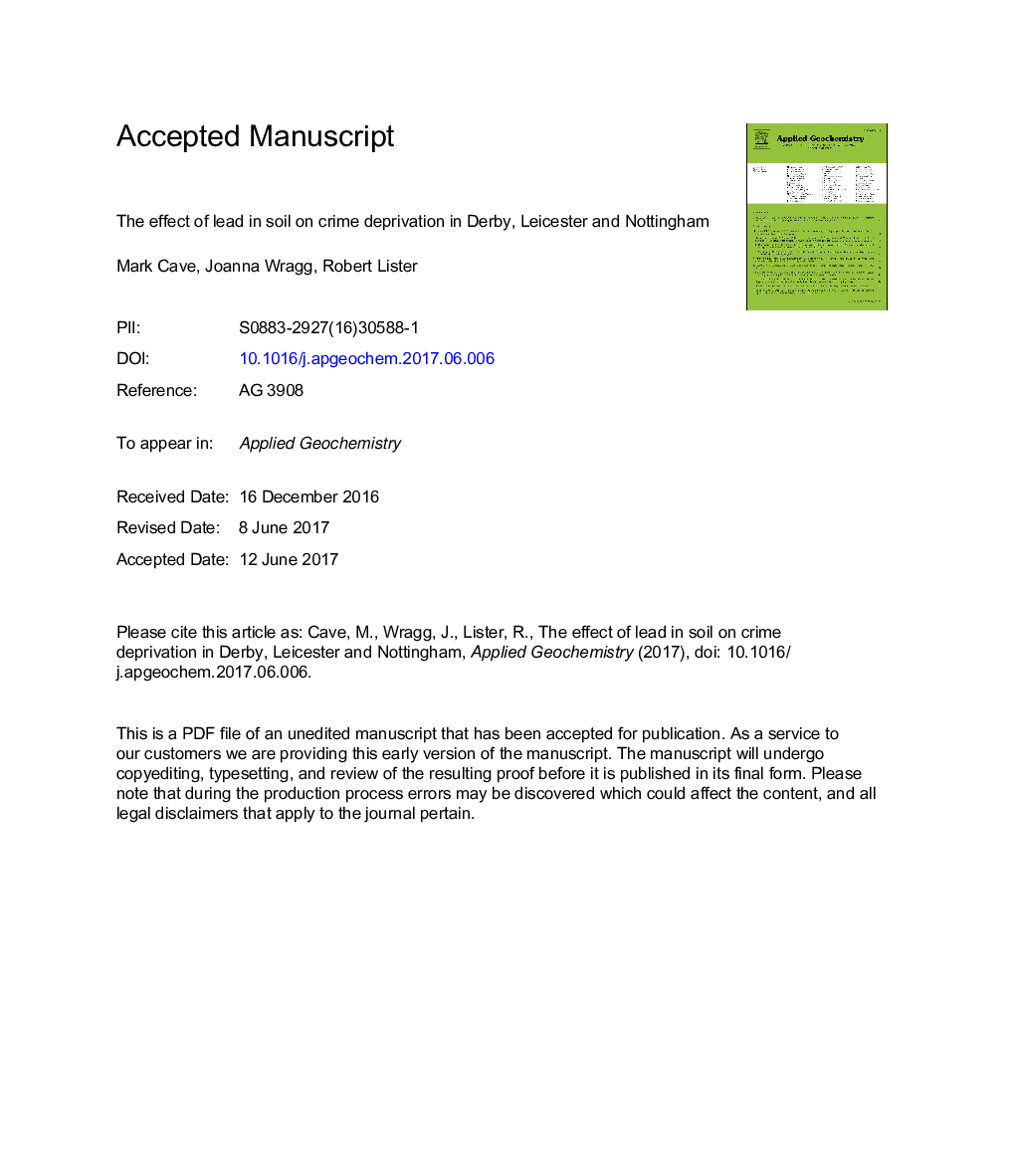| Article ID | Journal | Published Year | Pages | File Type |
|---|---|---|---|---|
| 8863226 | Applied Geochemistry | 2018 | 31 Pages |
Abstract
The aim of this study was to test the hypothesis that soil Pb is associated with criminality in selected urban environments within the UK. The study used geological and geochemical information and soil Pb data from Derby, Leicester and Nottingham, collected as part of a geochemical survey of urban soils. Crime and other associated socio-economic data were provided by a national survey on deprivation in the UK. The data were modelled using crime deprivation as the dependant variable and Pb, Sn and Ce in soil as well as three socio-economic factors associated with personal deprivation, population density and environmental deprivation as predictor variables. Both the generalised linear and the random forest modelling strategies showed that the socio-economic predictor variables and spatial associations were important in predicting crime deprivation. Pb and the two other soil chemistry parameters (Sn and Ce) were not important predictors of crime deprivation in Leicester and Nottingham. Pb and its interactions with spatial and socio-economic factors were, however, shown to have a significant effect on crime deprivation in Derby. The random forest model for Derby showed that there was an antagonistic interaction effect between Pb in soil and personal deprivation. The random forest model was used to produce “dose-response” curves of the effect of Pb in soil on crime deprivation under different spatial and socio-economic conditions.
Keywords
Related Topics
Physical Sciences and Engineering
Earth and Planetary Sciences
Geochemistry and Petrology
Authors
Mark Cave, Joanna Wragg, Robert Lister,
